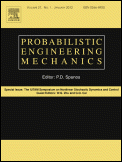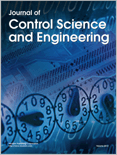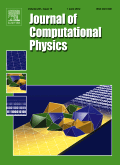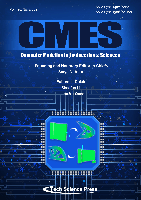
Data-Centric Engineering
Scope & Guideline
Empowering Engineers with Data-Centric Solutions
Introduction
Aims and Scopes
- Data-Driven Optimization:
The journal frequently publishes research on optimization techniques using data-driven models, highlighting how data can inform and enhance engineering design and decision processes. - Digital Twin Technologies:
A significant focus is placed on digital twin methodologies, which integrate real-time data with physical systems to improve monitoring, predictive maintenance, and operational efficiency. - Machine Learning Applications in Engineering:
The integration of machine learning techniques within engineering frameworks is a core area, with research exploring applications from structural health monitoring to predictive modeling in various engineering domains. - Uncertainty Quantification and Risk Assessment:
Research often addresses the quantification of uncertainties in engineering models, applying statistical and probabilistic methods to improve reliability and safety in engineering applications. - Multiphysics and Multiscale Modeling:
The journal emphasizes studies that combine multiple physical phenomena and scales in modeling, utilizing data-centric methods to enhance the understanding of complex systems.
Trending and Emerging
- Artificial Intelligence and Machine Learning Integration:
There is a marked increase in papers exploring the integration of AI and machine learning techniques into engineering practices, emphasizing their potential to transform predictive modeling and automation. - Advanced Digital Health Engineering:
Emerging research on digital health engineering, particularly in the context of aging infrastructure and healthcare applications, highlights the growing relevance of data-centric approaches in public health and safety. - Graph Neural Networks and Their Applications:
The application of graph neural networks is gaining momentum, particularly for modeling complex relationships in engineering problems, showcasing the versatility of these advanced methods. - Sustainable Engineering Practices:
A rising trend towards sustainability is evident, with research focusing on environmentally conscious engineering practices and the role of data in optimizing resource usage and reducing emissions. - Real-Time Data Analytics in Engineering:
The development of methodologies for real-time data analytics is becoming increasingly important, with papers addressing how immediate data insights can enhance decision-making and operational efficiency in engineering contexts.
Declining or Waning
- Traditional Statistical Methods:
There appears to be a waning interest in traditional statistical approaches to engineering problems, as researchers increasingly favor data-driven and machine learning methods that offer greater flexibility and predictive power. - Physical Experimentation:
Research relying heavily on physical experimentation without the integration of data-centric methodologies is becoming less common, reflecting a shift towards simulations and computational modeling. - Basic Data Management Techniques:
The focus on foundational data management techniques, such as simple database management or basic data collection methods, is declining in favor of more advanced analytics and big data solutions. - Generic Engineering Models:
The use of generic engineering models that do not leverage specific data insights is less prevalent, as there is a growing trend towards customized, data-informed models that address specific engineering challenges.
Similar Journals

Georisk-Assessment and Management of Risk for Engineered Systems and Geohazards
Pioneering Insights for Safer Engineered SystemsGeorisk - Assessment and Management of Risk for Engineered Systems and Geohazards is a premier journal published by Taylor & Francis Ltd, focusing on the interdisciplinary fields of building and construction, civil and structural engineering, geology, and geotechnical engineering. With a commendable impact within the scholarly community, it holds a distinguished Q1 ranking across multiple categories, reflecting its relevance and quality. The journal addresses critical issues related to risk assessment and management, especially concerning engineered systems and geohazards, making it an invaluable resource for researchers, professionals, and students dedicated to safety, risk, reliability, and quality. Operating under rigorous peer-review standards, it offers insights and innovative methodologies that empower stakeholders in making informed decisions. The journal is accessible via subscription, providing a wealth of knowledge from 2007 to 2024. Engaging with Georisk ensures that readers remain at the forefront of research and practical solutions in managing risks associated with complex engineering challenges and geological threats.

PROBABILISTIC ENGINEERING MECHANICS
Exploring the Intersection of Probability and Engineering Excellence.PROBABILISTIC ENGINEERING MECHANICS is a premier academic journal published by Elsevier, focusing on the rapidly evolving field of engineering mechanics with a probabilistic approach. Established in 1986, the journal has become an essential resource for researchers, professionals, and students, providing insights into various disciplines such as aerospace engineering, civil and structural engineering, and nuclear energy, among others. With a consistent Q2 ranking across multiple engineering categories, it reflects high-quality research and significant contributions to the field. Although it does not operate under an open access model, it offers invaluable access to advanced methodologies and innovative applications in engineering. The journal aims to promote the development and dissemination of probabilistic approaches to tackle complex engineering problems, thus bridging the gap between theoretical research and practical application. Located in the heart of the UK, PROBABILISTIC ENGINEERING MECHANICS continues to shape the future of engineering through rigorous peer-reviewed articles that influence both academia and industry.

JOURNAL OF NAVIGATION
Advancing Knowledge for Safer SeasJournal of Navigation, published by Cambridge University Press, is a premier academic journal that has served the maritime community since its inception in 1948. With an esteemed ISSN of 0373-4633 and an E-ISSN of 1469-7785, this journal is recognized for its rigorous peer-reviewed research that significantly contributes to the fields of Ocean Engineering and Oceanography. The journal ranks in the Q2 quartile, showcasing its position among the top-tier publications in these domains, with impressive Scopus rankings placing it 24th in Oceanography and 22nd in Ocean Engineering. While currently not an open-access publication, it offers valuable insights and advancements relevant to researchers, professionals, and students, fostering a deeper understanding of navigation in both theoretical and applied contexts. The Journal of Navigation aims to disseminate innovative research that impacts maritime practices and enhances navigational safety and efficiency.

COMPUTER-AIDED CIVIL AND INFRASTRUCTURE ENGINEERING
Exploring the Intersection of Design and ComputationCOMPUTER-AIDED CIVIL AND INFRASTRUCTURE ENGINEERING, published by WILEY, stands as a leading journal in the domains of civil and structural engineering, computational theory, and computer-aided design since its inception in 1986. With an impressive ISSN of 1093-9687 and E-ISSN of 1467-8667, this esteemed UK-based journal holds a prestigious position in the academic community, reflected by its Q1 ranking in numerous relevant categories, including Civil and Structural Engineering and Computer Graphics as of 2023. The journal is renowned for promoting innovative research that utilizes computational techniques to solve complex engineering problems, making it an essential resource for researchers, professionals, and students alike. Despite its lack of open access options, the journal garners significant interest due to its rigorous peer-review process and high-impact articles, underlining its importance in the advancement of infrastructure engineering practices and technologies. With a Scopus ranking placing it among the top journals in various engineering and computer science fields, COMPUTER-AIDED CIVIL AND INFRASTRUCTURE ENGINEERING continues to foster knowledge and collaboration, ultimately contributing to the future of smart and resilient infrastructure development.

Journal of Control Science and Engineering
Transforming Ideas into Engineering ExcellenceThe Journal of Control Science and Engineering, published by HINDAWI LTD, is a prominent open-access journal that has been disseminating pioneering research since 2007. With its ISSN 1687-5249 and E-ISSN 1687-5257, the journal serves as a crucial platform for researchers, professionals, and students engaged in the fields of Computer Science Applications, Electrical and Electronic Engineering, and Modeling and Simulation. Holding a Q3 quartile ranking in 2023 across these categories, the journal maintains rigorous academic standards and is recognized for its contributions to advancing knowledge and technology in control science. The journal's current Scopus rankings highlight its significance, with impressive percentiles placing it within the top tier of its fields. Readers can access a wide range of high-quality research articles through its open access model, further establishing the journal as an essential resource for anyone seeking to broaden their understanding and application of control principles.

JOURNAL OF COMPUTATIONAL PHYSICS
Unveiling New Dimensions in Applied MathematicsJOURNAL OF COMPUTATIONAL PHYSICS, an esteemed publication from ACADEMIC PRESS INC ELSEVIER SCIENCE, serves as a premier platform in the field of computational physics and its interdisciplinary applications. Since its inception in 1966, the journal has provided invaluable insights and significant advancements in areas such as applied mathematics, numerical analysis, and modeling and simulation. With a robust impact factor and ranking in the top quartile across various related categories, including Q1 in Applied Mathematics and Physics and Astronomy, it is essential reading for researchers and professionals aiming to stay at the forefront of computational techniques and methodologies. Although the journal is not open access, it remains highly regarded with a reputation for rigorous peer review and high-quality publications. As the field continues to evolve, the JOURNAL OF COMPUTATIONAL PHYSICS highlights innovative research that not only advances theoretical constructs but also offers practical applications in scientific and engineering domains. For scholars and students, this journal embodies a critical resource for deepening their understanding and fostering dialogue within the scientific community.

COMPUTERS & STRUCTURES
Integrating Technology with Structural ExcellenceCOMPUTERS & STRUCTURES is a leading interdisciplinary journal published by Pergamon-Elsevier Science Ltd, focusing on the application of computer methods in the fields of civil and structural engineering, mechanical engineering, materials science, and modeling and simulation. With a prestigious history dating back to its inception in 1971, this journal is committed to advancing the knowledge and methodologies that integrate computational techniques with structural analysis and design. Recognized in 2023 with a Q1 ranking across several categories, including Civil and Structural Engineering and Computer Science Applications, COMPUTERS & STRUCTURES emphasizes the importance of innovative research that pushes the boundaries of traditional engineering practices. Although the journal does not currently offer open access, it remains an invaluable resource for researchers, professionals, and students seeking to disseminate and discuss groundbreaking findings that are shaping the future of engineering and materials science. The rigorous peer-review process ensures the publication of high-quality articles that contribute to the global discourse in these critical fields.

PROGRAMMING AND COMPUTER SOFTWARE
Connecting Researchers and Practitioners in Software DevelopmentPROGRAMMING AND COMPUTER SOFTWARE is a distinguished journal committed to advancing the field of software development and programming methodologies. Published by PLEIADES PUBLISHING INC, this journal has been a valuable resource since its inception in 1978, reaching out to researchers, professionals, and students alike. With an emphasis on rigorous peer-reviewed articles, the journal holds a Q3 ranking in the realm of Software according to the latest 2023 Category Quartiles. Though it does not offer open access, the journal ensures that high-quality research is disseminated to its audience, providing insights into evolving programming techniques, software engineering challenges, and innovative solutions. With its convergence of years extending to 2024, PROGRAMMING AND COMPUTER SOFTWARE remains a pivotal publication, fostering a deeper understanding of the complexities in computer programming while supporting the broader software community.

CMES-COMPUTER MODELING IN ENGINEERING & SCIENCES
Enhancing Knowledge through Open Discourse and ResearchCMES-COMPUTER MODELING IN ENGINEERING & SCIENCES is a premier journal published by Tech Science Press, dedicated to advancing knowledge in the fields of computer science applications, modeling and simulation, and software engineering. With an impressive convergence of research from 2000 to 2024, this journal stands out as a vital resource for researchers, professionals, and students alike, fostering innovation and collaboration in computational methodologies. The journal currently holds a Q3 category ranking in multiple disciplines according to the latest metrics, including Scopus, which reflects its growing significance in the academic community. By providing a platform for high-quality research and open discourse, CMES aims to enhance the understanding of complex systems through effective modeling techniques and computational tools. Despite its current classification under open access, the journal remains a cornerstone for those looking to deepen their expertise in cutting-edge computational engineering and science.

Modelling
Pioneering New Paths in Modeling and Simulation.Modelling is a distinguished open access journal published by MDPI since 2020, dedicated to advancing the field of computational modeling across various scientific disciplines including Computer Science, Engineering, and Mathematics. With its base in Switzerland, the journal aims to foster a collaborative environment for researchers and practitioners while providing a platform for high-quality research on modeling and simulation techniques. As of 2023, it has garnered respectable rankings, achieving Q3 in Computer Science and Mathematics, and Q2 in Engineering, with notable Scopus values indicating an increasing impact within the academic community. Modelling not only publishes innovative research findings but also encourages the dissemination and discussion of emerging methodologies, making it a vital resource for scholars seeking to contribute to and expand the frontiers of knowledge in their respective fields. As an open access journal, it promotes unrestricted access to research outputs, ensuring greater visibility and impact for researchers and students alike.